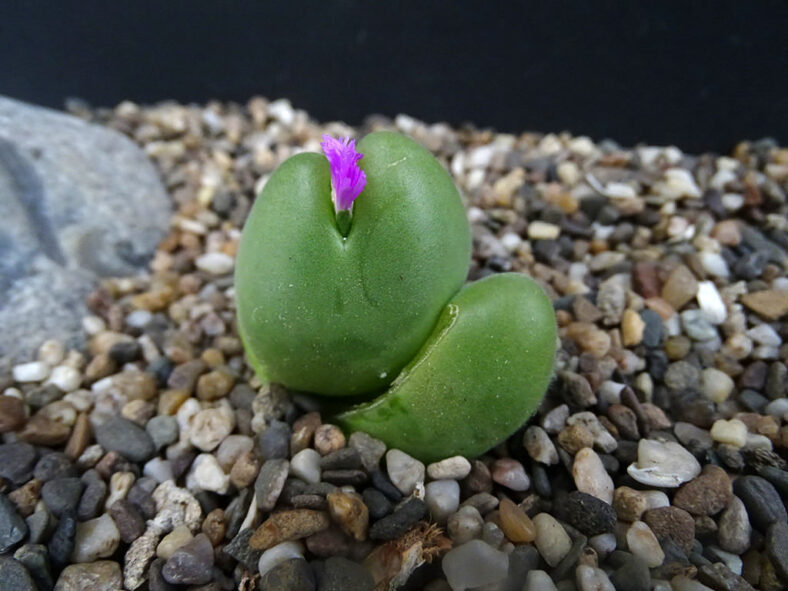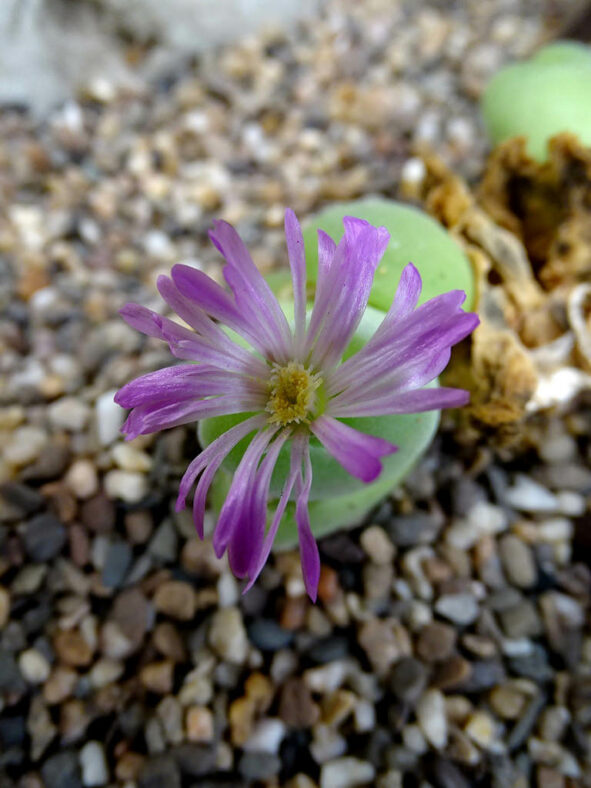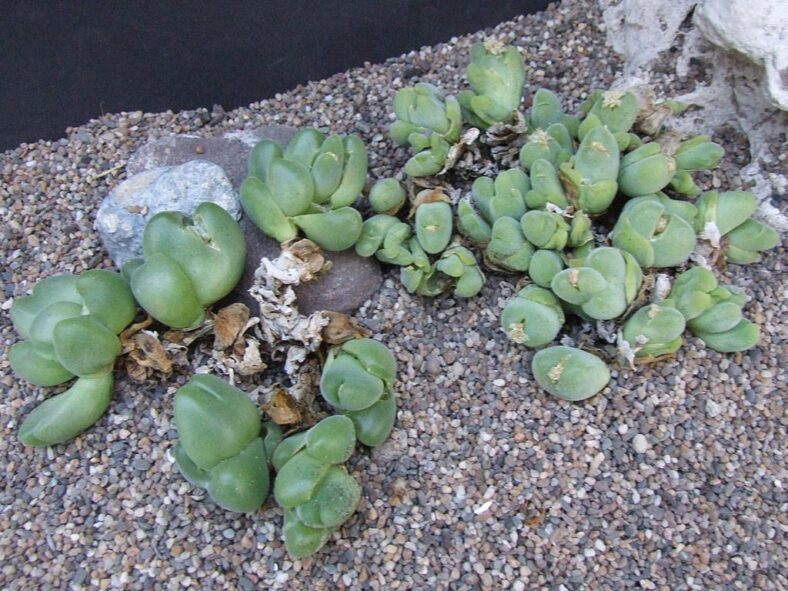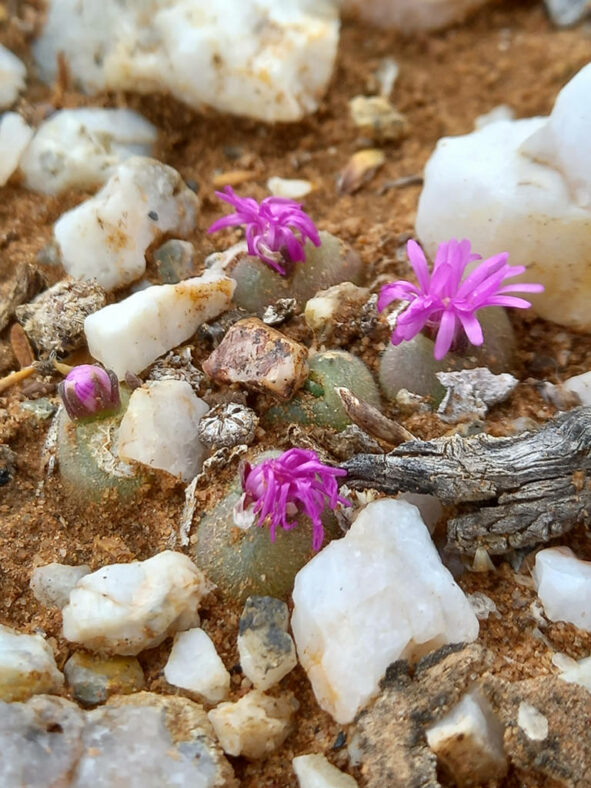Gibbaeum pilosulum is similar to Gibbaeum nuciforme but is distinguished from the latter by its hairy leaves.
Scientific Name
Gibbaeum pilosulum (N.E.Br.) N.E.Br.
Common Name(s)
Oldman Humpfig
Synonym(s)
Conophytum pilosulum, Gibbaeum molle, Mesembryanthemum pilosulum
Scientific Classification
Family: Aizoaceae
Subfamily: Ruschioideae
Tribe: Ruschieae
Genus: Gibbaeum
Etymology
The specific epithet "pilosulum" (pronounced pil-OH-sul-um) means "with fewer or shorter soft hairs" and refers to the leaves of this species that are covered with short, white hairs.
Origin
Gibbaeum pilosulum is native to South Africa. It occurs on brackish quartz in low-lying areas south of Touwsberg in the Western Cape province.
Description
Gibbaeum pilosulum is a dwarf succulent that forms a dense clump of paired, thick, fleshy leaves fused into egg-shaped bodies. The leaves are green, covered with soft, white, short hairs, and can reach a height and diameter of 1 inch (2.5 cm). The fissure between the leaves is not quite in the center and is up to 0.15 inches (0.4 cm) deep.
In late winter and spring, Gibbaeum pilosulum produces bright pink flowers that can reach a diameter of 0.7 inches (1.8 cm). The fruits are capsules with seven locules.

How to Grow and Care for Gibbaeum pilosulum
Light: Gibbaeum pilosulum requires bright light but not too much direct sunlight. So, a windowsill that receives 4 to 5 hours of direct sunlight in the morning and partial shade in the afternoon will be a perfect spot for indoor growing.
Soil: The plant thrives in porous soil, allowing the water to drain away quickly. Therefore, use commercial soil for succulents or make your own well-draining mix.
Temperature: High temperatures are not a problem as long as there is plenty of fresh air, but this plant is not cold-hardy. It grows best in USDA Plant Hardiness Zones 9b to 11b, with average minimum winter temperatures ranging from 25 to 50 °F (-3.9 to 10 °C).
Watering: To keep your Gibbaeum pilosulum healthy, it is most important to know when, how much, and how often to water it. During the dormant period, usually in winter, the plant requires little or no water. From spring to fall, water it thoroughly but allow the soil to dry between waterings.
Fertilizing: As long as you repot this plant every two years, it does not need fertilizer.
Repotting: Even if your plant can stay happy in the same pot for years, you can repot it once in a while to give it more space anytime during the growing season. However, the best time is at the beginning of the growing season.
Propagation: One simple way to propagate this plant is to divide clumps. Another option is to start from seeds by sowing them in well-draining soil during spring. The best time for dividing is late spring or early summer.
Learn more at How to Grow and Care for Mesembs.
Toxicity of Gibbaeum pilosulum
Gibbaeum pilosulum is considered non-toxic and safe around kids and pets.
Links
- Back to genus Gibbaeum
- Succupedia: Browse succulents by Scientific Name, Common Name, Genus, Family, USDA Hardiness Zone, Origin, or cacti by Genus
Photo Gallery
Click on a photo to see a larger version.


